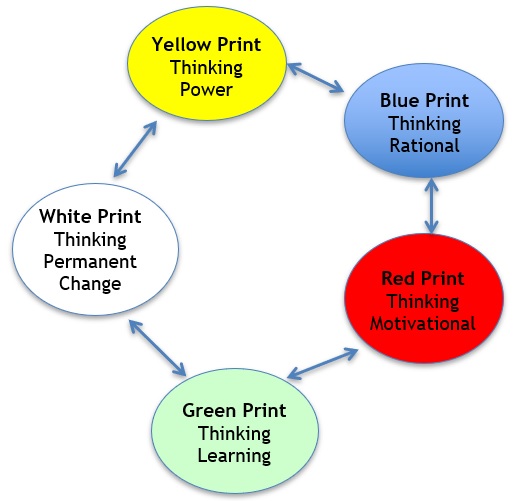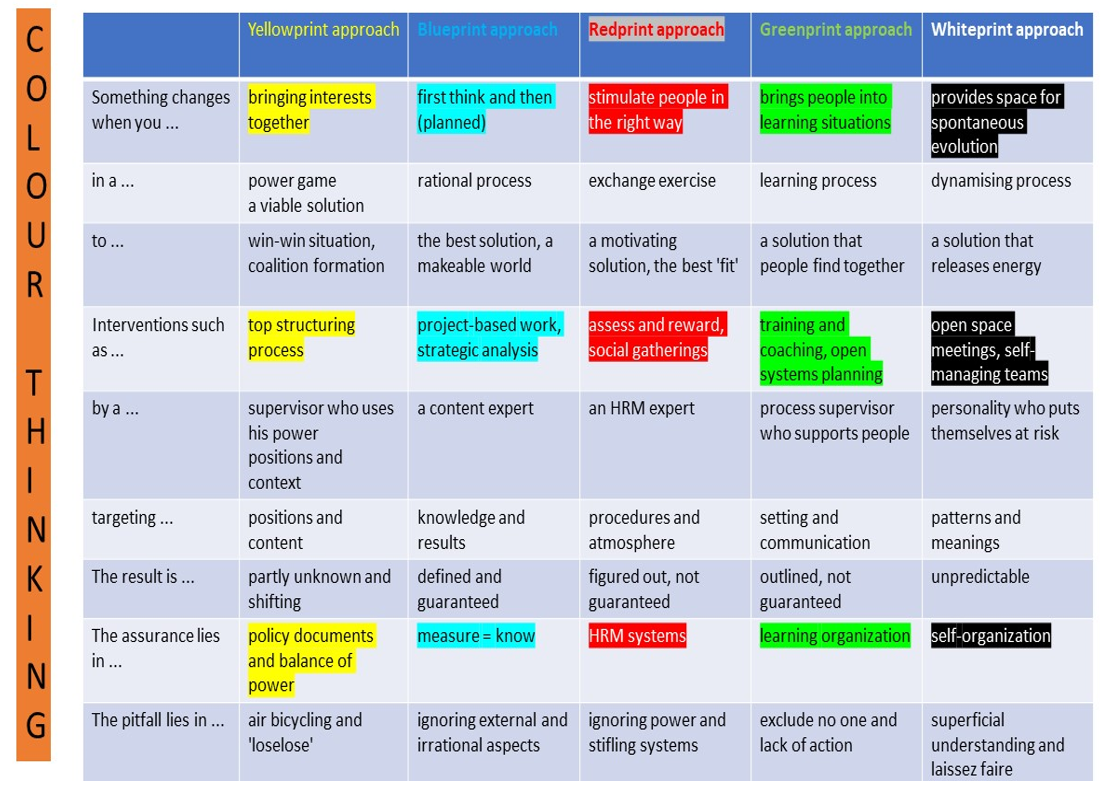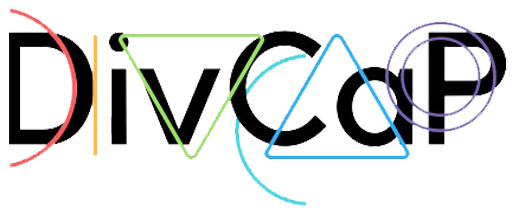Colour Print Model for Change: How to choose the right change approach?
Implementation of Diversity Policy
The colour print model for change gives an indication about the change approach which you can use to implement or improve diversity policy and inclusion in your organisation: what you need for a change process at organisational level, change both the organisational structure (procedures/rules/systems) and organisational culture (way of working, social culture, corporate culture, etc.).
The colour print model shows five different change management approaches. It is a practical set of concepts and guidelines that have been co-developed with practitioners to increase their understanding of real-life problems and suggest ways to address them.
The five change management approaches are represented in colours:

Exercise

Detailed explanations of the colour print model
| The Colour Print Model | ||
| Yellow-print thinking | power approach | Assumes that something only changes when key players are backing it and that little will happens if key players oppose it. In this view, enabling change requires getting the powers that are behind it, whether their power is based on formal positions (e.g. board members) or informal influence (e.g. opinion leaders) |
| Blue-print thinking | rationality, power does not matter most (rational approach) | The assumption is that change happens only when you analyse first what the problem is, suggest the best possible solution, and implement it according to plan. Change is thus deemed a linear endeavour: you think before you act. The process is expert driven: the activities are executed by those who have the necessary know-how and experience. |
| Red-print thinking | emphasis is on motivation, not on power or rationality (motivational approach) | The key assumption is that change is not about policies and plans but about behaviour, and that people change their behaviour only when they are stimulated to do so. In its simplest form this comes down to barter: the organization hands out rewards and offers support in exchange for personnel taking on tasks and responsibilities and trying their best. |
| Green-print thinking | emphasis is on learning (learning approach) | Changing and learning are deemed inextricably linked: they are thought to mean almost the same. The only way forward from a green point of view is to dig deeper: to discover one’s limits and expand and deepen the way we see and act in the world. |
| White-print thinking | no planned affair (permanent change approach) | In contrast, white-print change agents view change as constant and taking place of its own accord. The key assumption is that people can make the most difference when they understand and catalyse a change that is about to happen. In white-print thinking, change agents do not create evolution, but they do support transitions or stand in their way. |
Literature: Vermaak, H.; Caluwé, L. de (2018): The colors of change – revisited. Situating and describing the theory and its practical applications. Draft Manuscript. In: Shani, R.; Noumair, D. (Eds) (2018): Research in Organizational Change and Development (vol. 26), Bingley (UK): Emerald Insight, https://hansvermaak.com/wp-content/uploads/Vermaak-Caluwe-SHARE-VERSION-Colors-Revisited-ROCD-2018-FINAL-DRAFT.pdf [last access 2020-02-24]
